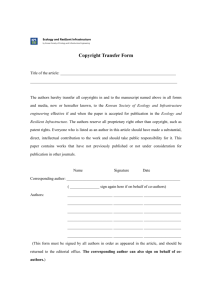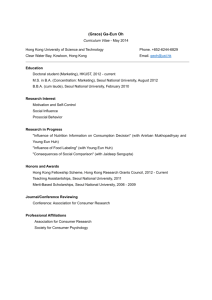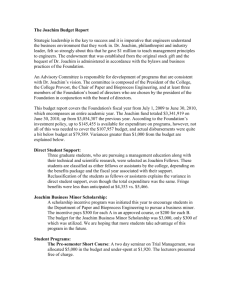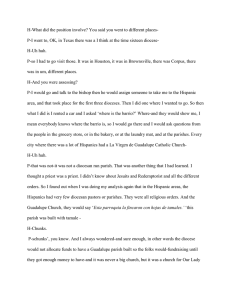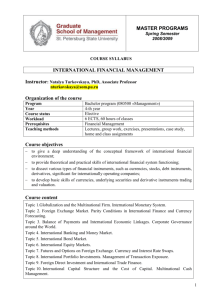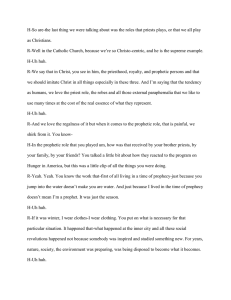Journal of Consumer Research - Jcr
advertisement
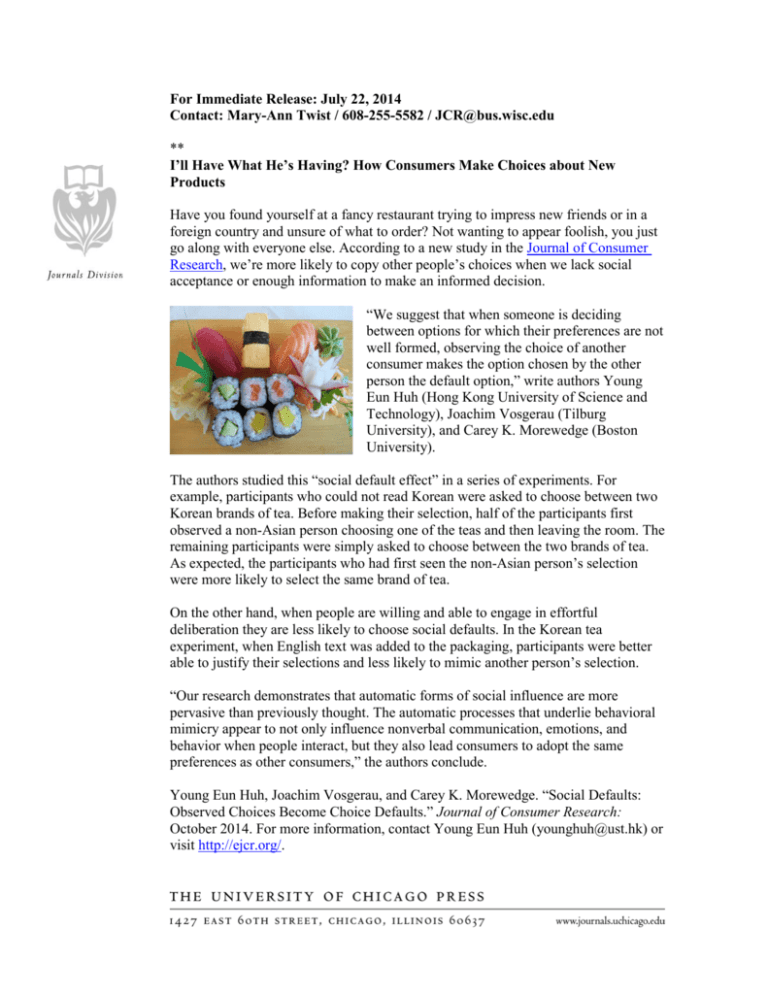
For Immediate Release: July 22, 2014 Contact: Mary-Ann Twist / 608-255-5582 / JCR@bus.wisc.edu ** I’ll Have What He’s Having? How Consumers Make Choices about New Products Have you found yourself at a fancy restaurant trying to impress new friends or in a foreign country and unsure of what to order? Not wanting to appear foolish, you just go along with everyone else. According to a new study in the Journal of Consumer Research, we’re more likely to copy other people’s choices when we lack social acceptance or enough information to make an informed decision. “We suggest that when someone is deciding between options for which their preferences are not well formed, observing the choice of another consumer makes the option chosen by the other person the default option,” write authors Young Eun Huh (Hong Kong University of Science and Technology), Joachim Vosgerau (Tilburg University), and Carey K. Morewedge (Boston University). The authors studied this “social default effect” in a series of experiments. For example, participants who could not read Korean were asked to choose between two Korean brands of tea. Before making their selection, half of the participants first observed a non-Asian person choosing one of the teas and then leaving the room. The remaining participants were simply asked to choose between the two brands of tea. As expected, the participants who had first seen the non-Asian person’s selection were more likely to select the same brand of tea. On the other hand, when people are willing and able to engage in effortful deliberation they are less likely to choose social defaults. In the Korean tea experiment, when English text was added to the packaging, participants were better able to justify their selections and less likely to mimic another person’s selection. “Our research demonstrates that automatic forms of social influence are more pervasive than previously thought. The automatic processes that underlie behavioral mimicry appear to not only influence nonverbal communication, emotions, and behavior when people interact, but they also lead consumers to adopt the same preferences as other consumers,” the authors conclude. Young Eun Huh, Joachim Vosgerau, and Carey K. Morewedge. “Social Defaults: Observed Choices Become Choice Defaults.” Journal of Consumer Research: October 2014. For more information, contact Young Eun Huh (younghuh@ust.hk) or visit http://ejcr.org/.

